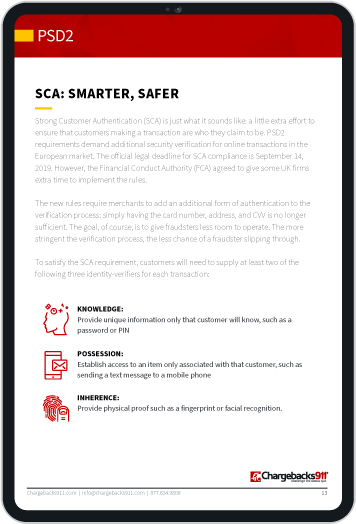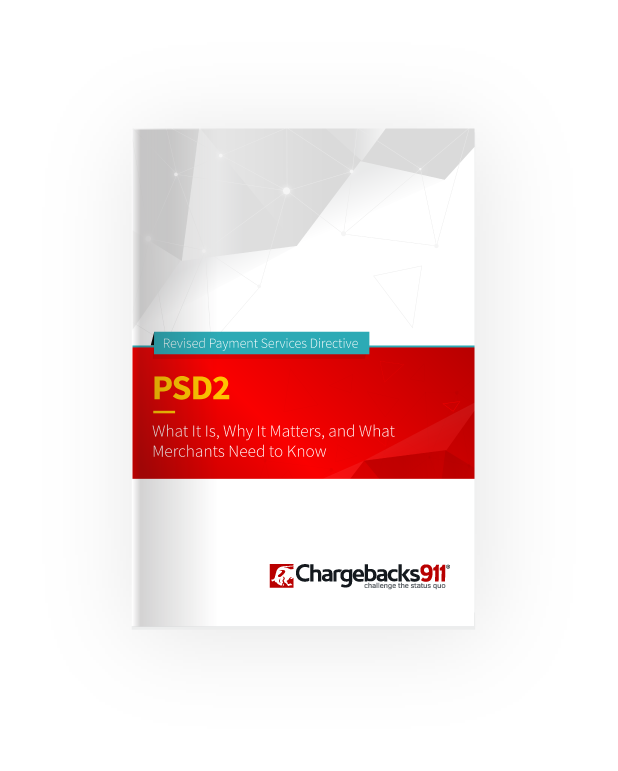8 Steps to Navigating – & Understanding – the Chargeback Schemes
“Chargeback scheme.” The term may sound a bit nefarious.
But, chargebacks play an important role in protecting consumers from credit card fraud. The chargeback scheme is simply the parameters that must be followed by all parties involved in the chargeback process.
Governments generally mandate that card networks implement some sort of mechanism to fight invalid credit card charges, and provide a road map for banks to follow. The different players in the process, however, have a little room to tweak the specifics. In other words, although the same basic steps are required, the details of the chargeback scheme can vary from brand to brand, or even bank to bank.
In this post, we look at what a chargeback scheme is, the steps involved in the process, and how new legislation is impacting the process.
Recommended reading
- What Happens if You File a False Chargeback Claim?
- Provisional Credits: Here’s Everything You Need to Know.
- Here are the 7 Valid Reasons to Dispute a Charge
- Chargeback Stats: All the Key Dispute Data Points for 2025
- A Step-By-Step Guide to the Chargeback Process in 2025
- Debit Card Chargebacks: Everything You Need to Know in 2025
A Note About Etymology
We should start by recognizing that, while the word “scheme” has some negative connotations in the US, the base meaning is simply a plan or an organized system. That’s the way the word is used when we’re talking about a chargeback scheme; an organized set of rules and procedures for filing a consumer chargeback.
The term “chargeback scheme” is used predominately in the UK. In the US, however, banks and card brands are more likely to say “chargeback process” or “chargeback system.” The core idea is still the same though.
A chargeback is a payment card charge that is forcibly reversed by an issuing bank, typically after a cardholder claims a transaction was the result of fraud or abuse.
What is the Chargeback Scheme?
- Chargeback Scheme
The chargeback scheme is a process that permits cardholders to challenge credit and debit card transactions. The cardholder can use these chargeback scheme rules to recover funds lost due to fraud or merchant abuse.
[noun]/charj • bak • skēm/
The body of practices that make up the chargeback scheme is a product of both government mandates and steps taken by individual banks and card networks. Governments created a basic framework and mandated its use. Working within this framework, card brands and financial institutions then fine-tuned the process to best serve their customers.
The chargeback scheme is a process that allows consumers to be reimbursed after a bad transaction. For example, if a criminal uses a cardholder’s identity to make fraudulent purchases, the cardholder can turn to the issuing bank and request a chargeback. The bank then overturns the transaction, and the chargeback is relayed to the merchant, who will be expected to cover the loss with added fees. It’s all part of this organized scheme.
Not surprisingly, this fraud protection mechanism has been tweaked and adapted over the years as new laws and technologies arise. From the outside, it appears to be a fair, functional system. But, there are ways in which the chargeback scheme can be abused, too (more on this later).
Parties Involved in the Chargeback Scheme
There are five basic entities involved in a chargeback scheme: the cardholder, the merchant, the issuer, the acquirer, and the card network.
Because of how the chargeback scheme developed, it is not a unified process. It can — and does — vary in many ways from one card brand to another. Mastercard have their own rules; Visa have theirs. Plus, these practices can change between countries.
There are a few basics that remain consistent, though. For instance, there are a few parties who will be involved in any chargeback. Each of these five key players have a specific role in the chargeback scheme:
The Chargeback Scheme: 8 Basic Steps
As we’ve mentioned, the specific procedures for each bank or card brand will seldom be exactly the same. That said, the chargeback scheme typically follows these eight basic steps:
#1 | The Cardholder Lodges a Dispute
The cardholder feels a transaction is illegitimate and disputes the case with their bank (the issuer).
#2 | The Issuer Files a Chargeback
The issuer files a chargeback on the customer’s behalf, withdrawing funds from your acquirer.
#3 | The Acquirer Removes the Funds
Your acquirer deducts the funds from your account. If you accept the chargeback, the process ends here; if you believe the chargeback is illegitimate, you can challenge the claim.
#4 | The Merchant Counters the Dispute
You resubmit the transaction to your bank along with compelling evidence in your defense. This process is called representment.
#5 | The Acquirer Submits Documents to Issuer
The acquirer reviews your rebuttal. If everything looks complete, they’ll forward the claim to the issuer.
#6 | The Issuer Reviews
The issuer reviews your case. If it is compelling enough (and submitted correctly), the issuer could reverse the chargeback.
#7 | The Acquirer Presents Evidence to Network
If the merchant wants to keep pursuing their case against the cardholder, the acquirer will then transfer the representment package to the card network for their decision.
#8 | The Card Network Makes a Decision
The card network will review all the evidence and make a final judgment. The losing party could be responsible for substantial additional chargeback fees.

Challenges With The Chargeback Scheme
The chargeback scheme is still effective when used as intended. With the rise of the internet and eCommerce, however, the system has become increasingly vulnerable to abuse by both fraudsters and cardholders. Lack of consistency between card network requirements has also created challenges.
The chargeback scheme was created to protect cardholders and help boost consumer confidence in credit cards. It was put into place back when credit cards were still a novelty, and buyers were still hesitant to use them for fear of fraud or abuse. Chargebacks offered tangible reassurance to consumers, and for a long time, the scheme worked as intended. Today, however, it’s far from an ideal solution.
Dated Processes
The chargeback scheme was adopted a half a century ago. At the time, no one could imagine things like online shopping and easy international shipping. As it turns out, the chargeback scheme simply hasn’t been responsive to changes in the marketplace. New technologies, sales channels, and practices have drastically changed how consumers shop. The chargeback scheme has not kept pace with these changes.
Inconsistency Across Card Brands
Complicating matters further is a lack of consistency. The Visa chargeback scheme, for example, is distinct from the Mastercard process in many ways, and the Mastercard chargeback scheme differs from the process used by Discover and Amex.
Inconsistency Across Banking Institutions
Banks can have varying requirements and practices, too. The chargeback scheme prescribed for Barclays cardholders, for example, can differ from the chargeback scheme for Lloyds Bank cardholders. And, both will vary from those of Virgin Money or NatWest.
The differences may appear minute, but seemingly-minor changes add up over time, especially since the rules are constantly forced to evolve to fit a changing payments landscape. This has made consistent practices difficult (if not impossible) to implement. Addressing these dense regulations requires specified expertise… something which few merchants can claim to have.
Should There be a Standard for the Chargeback Scheme?
All of this brings us to the operative word to describe what the chargeback scheme really needs: standardization.
Change happens fast in the digital marketplace, but the response from the industry tends to be a plodding, haphazard process. A concentrated, coordinated approach is required if we are to develop the dynamic payments environment we need, both for now and for the future. Card brands, banks, and merchants need to be involved in the conversation.
Want to know more about the latest efforts for payments industry standardization? Have other questions about navigating the minefield of different chargeback scheme arrangements?
Good news: you can speak with one of our experts today. Help is just a click away.
FAQs
What is a chargeback program?
A chargeback program (or “scheme”) is a mechanism for issuers to reverse payment card transactions, due to either an error in the transaction or based on a dispute filed by the cardholder. Typical reasons for customer chargebacks include unauthorized transactions, products or services which were not as advertised, billing issues, or non-delivery of an order..
What are chargeback scheme fees?
Within the structure of the card scheme, different fees can be assessed to cover the banks' costs for dealing with a dispute the merchant should have resolved. These costs are levied directly against the merchant, increasing the direct costs of a chargeback.
What is a chargeback and how does it work?
A chargeback is a credit or debit card transaction that is forcibly reversed by an issuing bank. This typically happens after a cardholder claims a transaction was the result of fraud or abuse. The customer contacts the bank, which may refund the customer on a temporary basis while the claim is under review.
Is a chargeback a refund?
A chargeback refund is the total amount of a disputed transaction (including taxes, shipping, and so on) which is returned to the customer in event of a probable case of either fraud or merchant abuse.
Who pays when you do a chargeback?
If a chargeback is initiated by the issuing bank, the merchant involved will typically be charged per-transaction fees to cover the costs by the processing network. In cases of fraud, the issuer bank usually accepts liability, but the merchant may still be charged certain fees. There are also fees charged by the merchant's acquirer, and additional merchant penalties may also apply.















